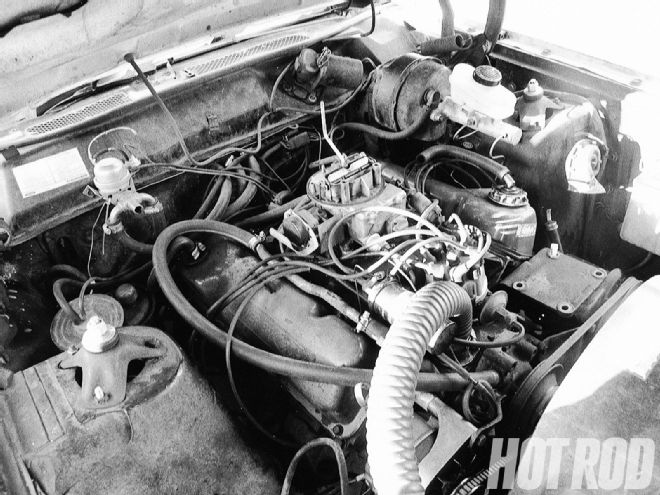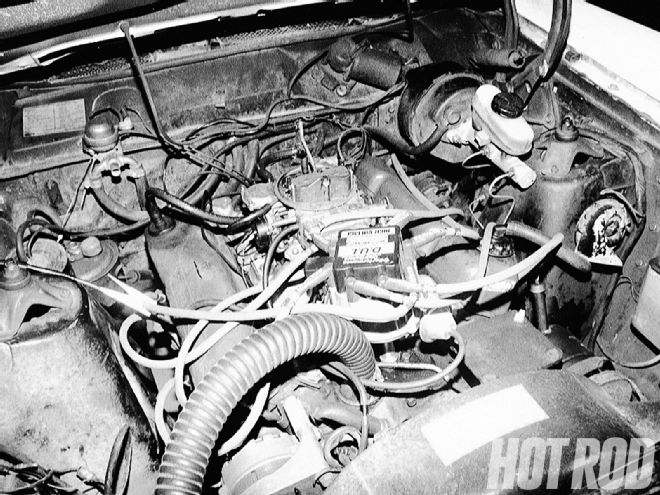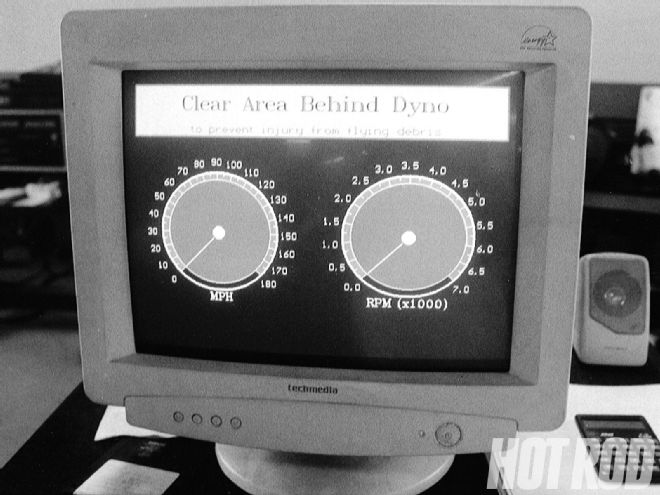
With so much fuss about EFI, you'd think we'd given up on the good ol' four-barrel carburetor completely. It's hard to beat the tried-and-true four-barrel swap. For less than $400 and a day, you can easily bolt 25 hp onto your car's engine.

Our 140,000-mile 351 Cleveland is stock (down to the factory-original single exhaust), except for the ignition, alternator, and air cleaner. We aren't looking to make our Montego an all-out strip blazer, so everyday driveability with decent torque is mandatory. We called Summit Racing and got our grubby mitts on a Holley 80457 carb: 600 cfm, vacuum secondaries, and electric choke. Anything more would have been overkill for such a tepid application, and the 80457 is a fine all-purpose four-barrel street carb to put on top of our Weiand #7516 single-plane intake manifold.
Wait. Single-plane intake? Street motor? Isn't that single-plane stuff for high-revving race motors where a deep-breathing top end is the name of the game? Aren't we building a street motor where torque is king, especially in LA's annoying stop-and-go-but-mostly-stop driving? Well, yeah, we thought so, too. We raised a collective editorial eyebrow and hemmed and hawed for a while. But the folks at Weiand swore that its single-plane tuned-runner design will help the engine build all the torque we'll need, as low as 1,500 rpm. We remained skeptical, to say the least, and planned to hook the results up to the dyno to see who's right.
 Nobody knows, but the dyno does:
Nobody knows, but the dyno does:
There was no porting, no matching, no optimizing, no such hodgepodge to skew our results: We plunked the things on as they came out of the box...and ran them. Our candidates had to stand on their own merits. Bolting it together took less than a day all told. Holley offers an adapter to connect the original kick-down lever under PN 20-41, but we didn't order it in time for our test. Just so you know, all two-barrel Cleveland engines were hooked to the C4 transmission; factory four-barrel Clevelands were backed by the small-bellhousing C6.
We felt a noticeable seat-of-the-pants improvement as soon as we twisted the key, popped the lever into "D," and went for a spin. But seat of the pants just ain't enough. We took the Montego to Joe Jill's Superior Automotive and ran the numbers on his Dynojet chassis dynamometer. Our stock two-barrel wheezer started out at 150 rear-wheel horsepower at 4,600 rpm and 250 lb-ft of torque at 2,500 rpm (Factory rated horsepower in 1970 was 250, but when you knock off 20 percent for gross-to-net ratings and 20 more percent for driveline losses, 150 hp sounds about right...unfortunately). The resultant power levels: 176 hp at 4,800 rpm and 250 lb-ft at 2,500 rpm. The torque did not take a dump with the single-plane, defying our predictions-although it didn't gain either.
As our mushy Montego will pri-marily be a road-handling car, the 23 pounds we took off the nose by installing the Weiand aluminum intake and Holley carb will come in handy in helping balance our package out. Additionally, and subjectively, the aural aspects of a four-barrel-the heady intake of air that fills your ears as the secondaries kick in, mixed with the punch in the small of your back under hard acceleration-cannot be denied. What's more, a four-barrel can often increase gas mileage over inefficient factory two-bbls. And there is now a 75mph sweet spot that our Cleveland never had before.
We realize that we haven't helped ourselves by keeping the factory exhaust manifolds, single pipe, and two-barrel cam-those are other installs for other times. Doubtless the increases reflected here would be even more dramatic with other parts already installed. We felt a little soft around town, however, and wished that the torque increase would be in line with the horsepower gain. Meanwhile, 25 hp is nothing to sneeze at for less than a day of dirty fingernails. Stay tuned as we try out a dual-plane intake, and see if we can boost the torque as impressively as we boosted our horsepower.